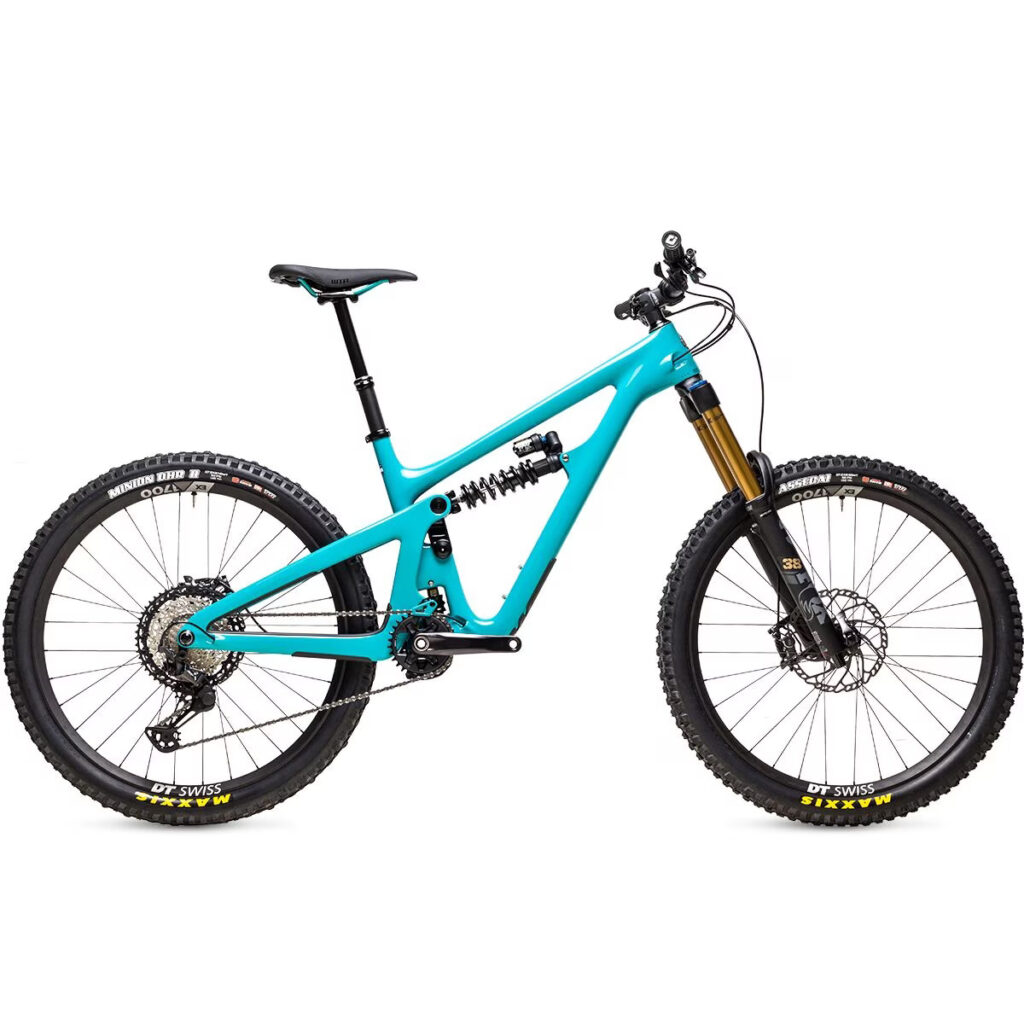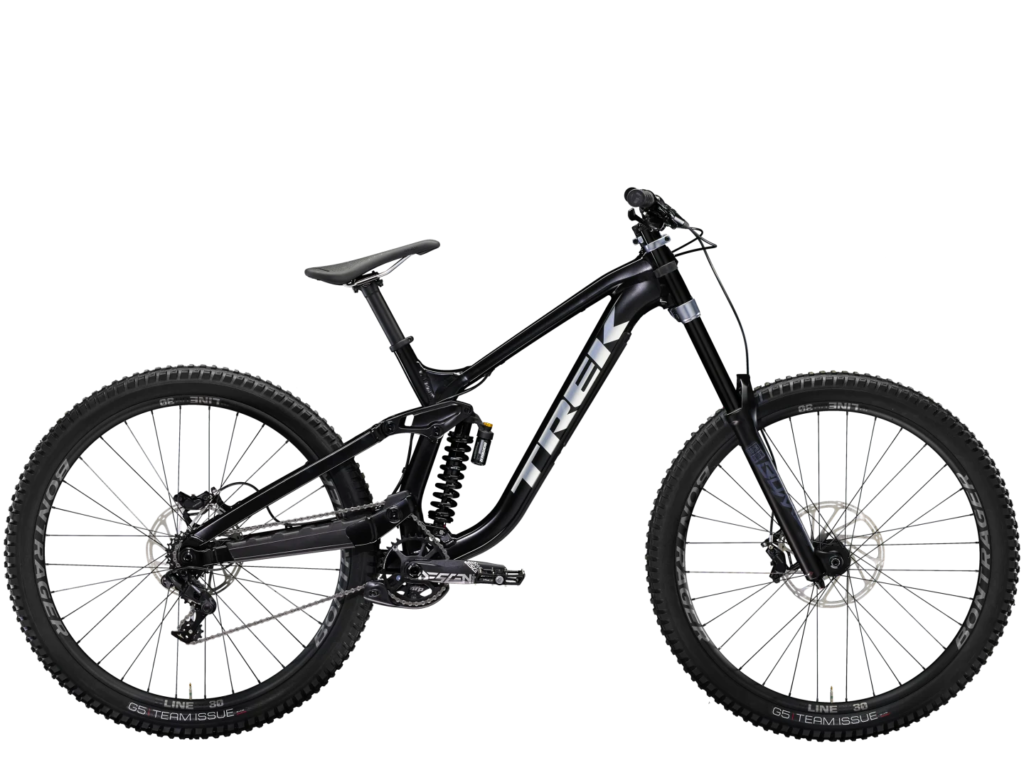Downhill Bike Frame Materials and Their Impact: Navigating Carbon vs. Aluminum

Key Point Summary of Downhill Bike Frame Materials and Their Impact:
- Downhill Bike Frame Materials: The primary materials used for DH bike frames are carbon fiber and aluminum, each offering unique advantages in terms of weight, strength, and ride characteristics.
- Carbon vs. Aluminum: Carbon fiber is prized for its low weight and high stiffness, allowing for precise handling and efficient power transfer. Aluminum, being more cost-effective, offers durability and a slightly more forgiving ride.
- Material Benefits: The choice between carbon and aluminum frames impacts the bike’s overall performance, including its handling on technical descents, ability to absorb shocks, and overall durability in demanding DH conditions.
Navigating the adrenaline-pumping world of downhill (DH) mountain biking requires not just skill and nerve but also a deep understanding of the equipment underpinning the sport. As a seasoned cyclist with years of experience across various biking disciplines, I’ve come to appreciate the critical role that frame materials play in the performance of downhill bikes. In this article, we’ll delve into the nuances of downhill bike frame materials, particularly focusing on the comparison between carbon and aluminum, and explore their benefits and impacts on riding experience.
The Evolution of Frame Materials in Downhill Biking
The journey through downhill biking’s evolution has seen a significant shift in frame materials. Initially dominated by steel for its durability and repairability, the DH scene quickly embraced aluminum for its lighter weight and cost-effectiveness. However, the quest for even lighter and stronger frames led to the adoption of carbon fiber, marking a new era in DH bike design. This transition mirrors the broader trends in mountain biking, reflecting ongoing innovations aimed at optimizing performance.

Carbon Fiber: The High-Performance Choice
Carbon fiber stands at the pinnacle of modern bike frame technology, favored in the DH community for its unparalleled strength-to-weight ratio. The material’s ability to be molded into complex shapes also allows engineers to optimize frame geometry and stiffness for maximum control and efficiency. Riding a carbon DH bike, one immediately notices the sharp responsiveness and reduced weight, facilitating quicker maneuvering and easier handling on demanding descents.
Aluminum: The Durable Workhorse
Aluminum remains a popular choice for DH frames, revered for its blend of strength, durability, and affordability. While slightly heavier than carbon, aluminum frames can offer a more forgiving ride, absorbing vibrations and impacts that are all too common in downhill biking. The material’s resilience and ease of manufacturing also make aluminum bikes a more accessible option for many riders, without significantly compromising on performance.

Comparing the Benefits: Carbon vs. Aluminum
Choosing between carbon and aluminum for a DH bike frame depends on several factors, including budget, riding style, and performance preferences. Carbon frames, with their lighter weight and stiffness, are ideal for riders seeking every competitive edge, particularly in terms of speed and handling precision. However, this high performance comes at a higher cost. Aluminum frames, on the other hand, provide a cost-effective solution that does not shy away from the rough and tumble of DH riding, offering excellent durability and a slightly more compliant ride that some riders prefer for long days on the mountain.
The Impact of Frame Material on Riding Experience
The material of a DH bike frame significantly influences the overall riding experience. Carbon frames can transform a descent with their agile handling and efficient power transfer, making it easier to navigate technical sections and maintain speed. Aluminum frames, while heavier, offer a robustness that instills confidence when tackling rocky, unpredictable terrain. The choice between the two materials thus becomes a balance between seeking maximum performance and prioritizing durability and value.

Here are the top-rated downhill bikes, encapsulating the essence of design advancements and material benefits in the downhill biking sector:
1. Evil Insurgent
- The Evil Insurgent is celebrated for its agility and capability across Enduro and downhill tracks alike, boasting 170mm of front travel and 168mm of rear travel. It’s recognized for its excellent pedaling efficiency and a playful nature that encourages creative riding.
2. Pivot Phoenix
- The Pivot Phoenix is lauded for its lightweight yet robust design, making it a race-ready downhill monster. Its efficiency in pedaling and confident handling on descents cater to those aiming to dominate downhill trails.
3. Rocky Mountain Slayer
- The Rocky Mountain Slayer is designed to excel in both bike parks and trail riding, equipped with dual Crown downhill forks. This versatile freeride mountain bike is engineered to master any terrain it faces.
4. Salsa Blackthorn
- Known for its lightweight EPS molded carbon frame and efficient pedaling design, the Salsa Blackthorn is an all-mountain-to-enduro trail bike. It stands out for its generous suspension travel and agile nature.
5. Scott Ransom
- The Scott Ransom impresses with its balanced handling and the Twin Lock suspension system, providing efficiency on climbs and stiffness for confident descents, embodying the trail-taming capabilities of a premium downhill bike.
These bikes represent the pinnacle of downhill biking, offering a mix of efficiency, handling, and frame stiffness that caters to the demands of downhill enthusiasts. From versatile Enduro styles like the Evil Insurgent to the race-focused precision of the Pivot Phoenix, each bike showcases the culmination of technological advancements in frame materials and bike design, aiming to provide the ultimate downhill experience.

Final Thoughts
The evolution of frame materials in downhill biking from aluminum to carbon fiber represents a broader trend toward optimizing performance through technology. Whether choosing the lightweight precision of carbon or the rugged durability of aluminum, riders are now equipped with options that enhance their downhill experience in distinct ways.
Understanding the benefits of each material allows for an informed choice, tailored to the unique demands of downhill mountain biking and the preferences of each rider. As the technology continues to evolve, the thrill of downhill biking only grows, powered by advancements that push the boundaries of what’s possible on two wheels.
John

FAQ
What are downhill bike frames made of?
Downhill bike frames are primarily made of aluminum and carbon fiber, chosen for their strength, durability, and ability to withstand the rigorous demands of downhill riding.
What are the 4 main materials used for bike frames?
The four main materials used for bike frames are steel, aluminum, carbon fiber, and titanium. Each material offers unique benefits in terms of weight, strength, ride quality, and cost.
What is the best frame material for a mountain bike?
The best frame material for a mountain bike depends on the rider’s preferences, budget, and riding style. Carbon fiber is often considered the best for high-performance mountain bikes due to its lightweight and stiffness, but aluminum is a popular, more affordable choice that still offers excellent performance.
Does bike frame material matter?
Yes, bike frame material matters significantly. It affects the bike’s weight, durability, comfort, handling, and price, directly influencing the riding experience and performance across different terrains and disciplines.






